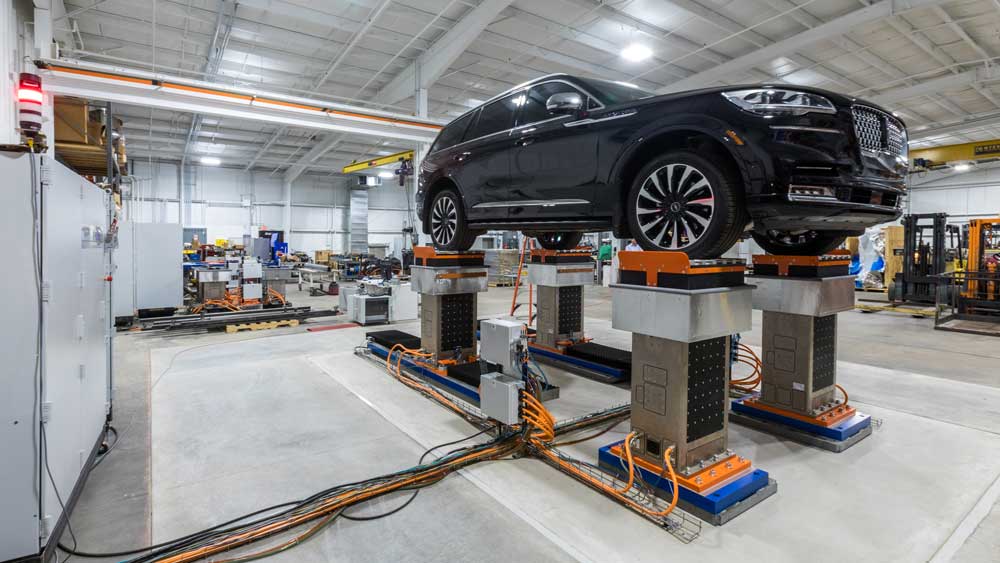
eMpulse Test Systems’ four-poster road simulator uses servo-electric actuators to simulate road and driving conditions.
Since the early 1980s, the automotive industry has used hydraulically actuated (servo-hydraulic) test systems to simulate operating speeds and road conditions for testing OEM components and fully assembled vehicles. These systems have helped unlock vast improvements in the quality, safety, and reliability of the cars and trucks coming off the world’s assembly lines.
|
ADVERTISEMENT |
Thanks to these four-poster road simulators, vehicle manufacturers and their suppliers nearly eliminated the “buzz, squeak, and rattle” (BSR) issues that once could plague new cars and trucks, annoy their owners, and cause huge headaches and costs for dealers and manufacturers alike. Other vehicles—motorcycles, ATVs, and golf carts among them—are now tested similarly. Durability testing, noise, vibration, and harshness (NVH) characteristics and accelerated life testing can all be assessed.
…
Add new comment